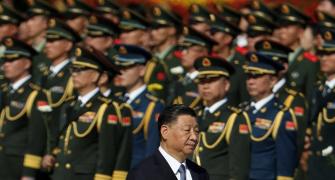In part four of a series, Arbind Modi & Arvind Subramanian explain how scrapping the exemptions for the countervailing duty will eliminate the negative protection facing Indian manufacturers.
Part I: 5 vital questions on India's credit
Part II: Experts list few things that will be different in FY16
Part III: India must learn from China to revive its ailing railways
 It is insufficiently appreciated that India’s border tax arrangements undermine Indian manufacturing and the ‘Make in India’ initiative. Eliminating exemptions in the countervailing duties (CVD) levied on imports will address this problem. How so?
It is insufficiently appreciated that India’s border tax arrangements undermine Indian manufacturing and the ‘Make in India’ initiative. Eliminating exemptions in the countervailing duties (CVD) levied on imports will address this problem. How so?
It is a well-accepted proposition in tax theory that achieving neutrality of incentives between domestic production and imports requires that all domestic indirect taxes also be levied on imports. So, if a country levies a sales tax, VAT, or excise or GST on domestic sales/production, it should also be levied on imports. In India, this is achieved through the CVD which is levied on imports to offset the impact of the excise duty levied on domestically manufactured goods.
However, CVD exemptions act perversely to favour foreign production over domestically produced goods; that is, they provide negative protection for Indian manufacturing. The table illustrates the impact of CVD and excise exemptions. When there are no CVD and excise exemptions (scenario 1), neutrality of incentives between domestic goods and imports is achieved which is desirable.
In scenario 2, there is no excise exemption but there is a CVD exemption which results in a large penalty on domestic producers (of 11 per cent under certain assumptions about costs).
But the important and subtle point relates to scenario 3 when both the excise and CVD are exempted. This may seem apparently neutral between domestic production and imports but it is not. The imported good enters the market without the CVD imposed on it; and, because it is zero-rated in the source country, is not burdened by any embedded input taxes on it.
The corresponding domestic good does not face the excise duty, but since it has been exempted, the input tax credit cannot be claimed. The domestic good is thus less competitive to the foreign good because it bears input taxes which the foreign good does not. In the example, the penalty on domestic producers is over 9 per cent. In effect, a policy designed to promote domestic manufacturing through excise exemption creates a perverse incentive for the exempt industry and its eventual decline.
The CVD, which is levied to offset the excise duty imposed on domestic producers, is not applied to a whole range of imports. These exemptions can be quantified. The effective rate of excise on domestically-produced non-oil goods is about 9 per cent. The effective collection rate of CVDs should theoretically be the same but is in fact only about 6 per cent.
The difference not only represents the fiscal cost to the government of ~40,000 crore, it also represents the negative protection in favour of foreign produced goods over domestically produced goods.
Two defences of CVD exemptions are typically made. First, that CVD exemptions on inputs help manufacturers by reducing their input costs. But under the current system and in future when the GST is implemented, the CVD on inputs can always be reclaimed as an input tax credit. So, CVD exemptions do not provide additional relief. In fact, they help collection efficiency because they are levied at customs.
The second rationale advanced for exempting many imported goods from CVD is that there is no competing domestic production. This argument is faulty because the absence of competing domestic production may itself be the result of not having the neutrality of incentives that the CVD creates. Domestic producers may have chosen not to enter because the playing field is not level.







